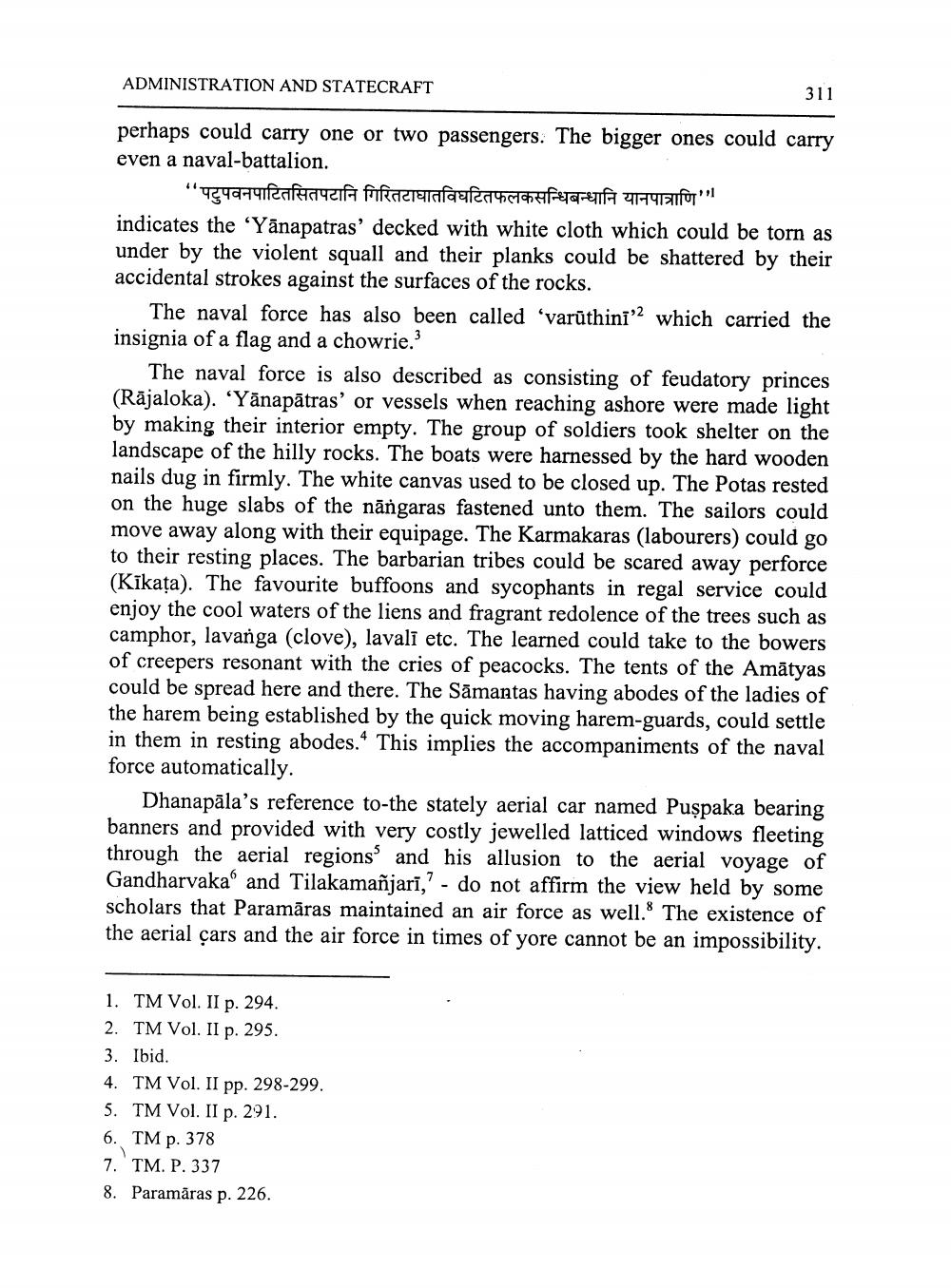________________
ADMINISTRATION AND STATECRAFT
311
perhaps could carry one or two passengers. The bigger ones could carry even a naval-battalion.
"पटुपवनपाटितसितपटानि गिरितटाघातविघटितफलकसन्धिबन्धानि यानपात्राणि"" indicates the ‘Yānapatras' decked with white cloth which could be torn as under by the violent squall and their planks could be shattered by their accidental strokes against the surfaces of the rocks.
The naval force has also been called 'varūthini®2 which carried the insignia of a flag and a chowrie.
The naval force is also described as consisting of feudatory princes (Rājaloka). 'Yānapātras' or vessels when reaching ashore were made light by making their interior empty. The group of soldiers took shelter on the landscape of the hilly rocks. The boats were harnessed by the hard wooden nails dug in firmly. The white canvas used to be closed up. The Potas rested on the huge slabs of the nāngaras fastened unto them. The sailors could move away along with their equipage. The Karmakaras (labourers) could go to their resting places. The barbarian tribes could be scared away perforce (Kīkața). The favourite buffoons and sycophants in regal service could enjoy the cool waters of the liens and fragrant redolence of the trees such as camphor, lavanga (clove), lavali etc. The learned could take to the bowers of creepers resonant with the cries of peacocks. The tents of the Amātyas could be spread here and there. The Sāmantas having abodes of the ladies of the harem being established by the quick moving harem-guards, could settle in them in resting abodes. This implies the accompaniments of the naval force automatically.
Dhanapāla's reference to the stately aerial car named Puspaka bearing banners and provided with very costly jewelled latticed windows fleeting through the aerial regions and his allusion to the aerial voyage of Gandharvaka and Tilakamañjarī,” - do not affirm the view held by some scholars that Paramāras maintained an air force as well. The existence of the aerial cars and the air force in times of yore cannot be an impossibility.
1. TM Vol. II p. 294. 2. TM Vol. II p. 295. 3. Ibid. 4. TM Vol. II pp. 298-299. 5. TM Vol. II p. 291. 6. TM p. 378 7. TM. P. 337 8. Paramāras p. 226.




